Search Images
Browse Content (p. 1066)
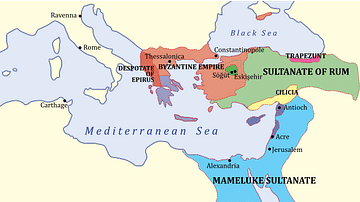
Image
The Levant, 1263 CE
A map showing the various states of the Levant c. 1263 CE.
Light Blue: Mamluk Sultanate
Dark Blue: Latin East
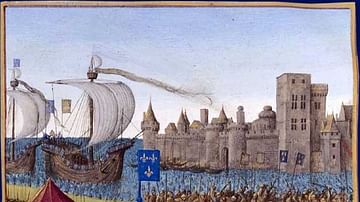
Image
Death of Louis IX at Tunis, 1270 CE
A 15th century CE painting depicting the death of French king Louis IX in 1270 CE during the Eighth Crusade at Tunis.
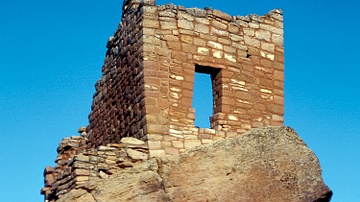
Image
Stronghold House, Hovenweep
A tower or stronghold house, Hovenweep National Monument, Colorado-Utah, USA. c. 1000-1300 CE.

Image
Tower Ruins, Hovenweep
Ruined towers, the 'Cutthroat' group, Hovenweep National Monument, Utah-Colorado, USA. c. 1100-1300 CE.
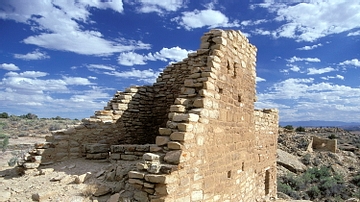
Image
Cajon Tower, Hovenweep
A tower of the Cajon group, Hovenweep National Monument, Colorado-Utah, USA. c. 1000-1300 CE.
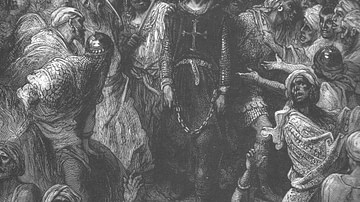
Image
Louis IX Captured During the Seventh Crusade
A 19th century CE illustration by Gustav Doré showing the French king Louis IX (r. 1226-1270 CE) and his capture by the army of the Ayyubid Empire during the Seventh Crusade (1248-1254 CE).
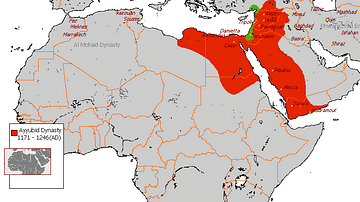
Image
Map of the Ayyubid Empire
A map indicating (in red) the greatest extent of the Ayyubid Dynasty's empire (1171-1250 CE). Green indicates the areas controlled by the Crusader states (aka Latin East).

Image
Louis IX Departing for the Seventh Crusade
A 14th century CE illustration of Louis IX of France (r. 1226-1270 CE) departing Aigues Mortes for Egypt on the Seventh Crusade (1248-1254 CE).
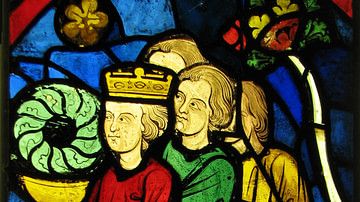
Image
King Louis IX Carrying the Crown of Thorns
Created in Tours, France, sometime between 1245-1248 CE, this stained glass panel depicts King Louis IX (r. 1226-1270 CE) carrying the crown of thorns. Measures 55 x 35 cm. (Metropolitan Museum of Art, New York)

Image
St. Gallen Cathedral
Abbey Cathedral of St. Gallen, Switzerland, founded c. 720 CE.